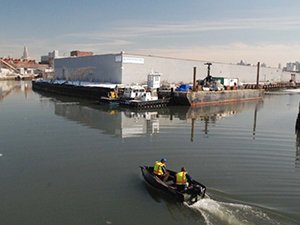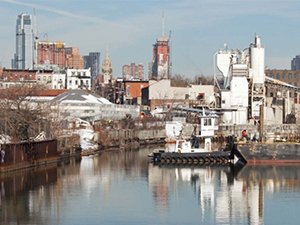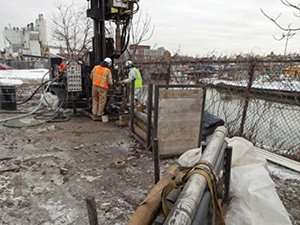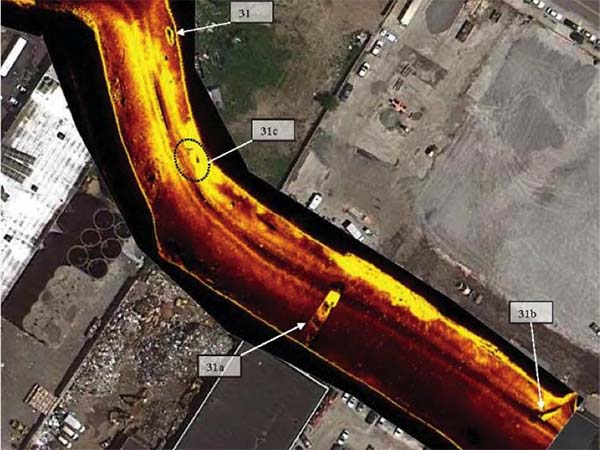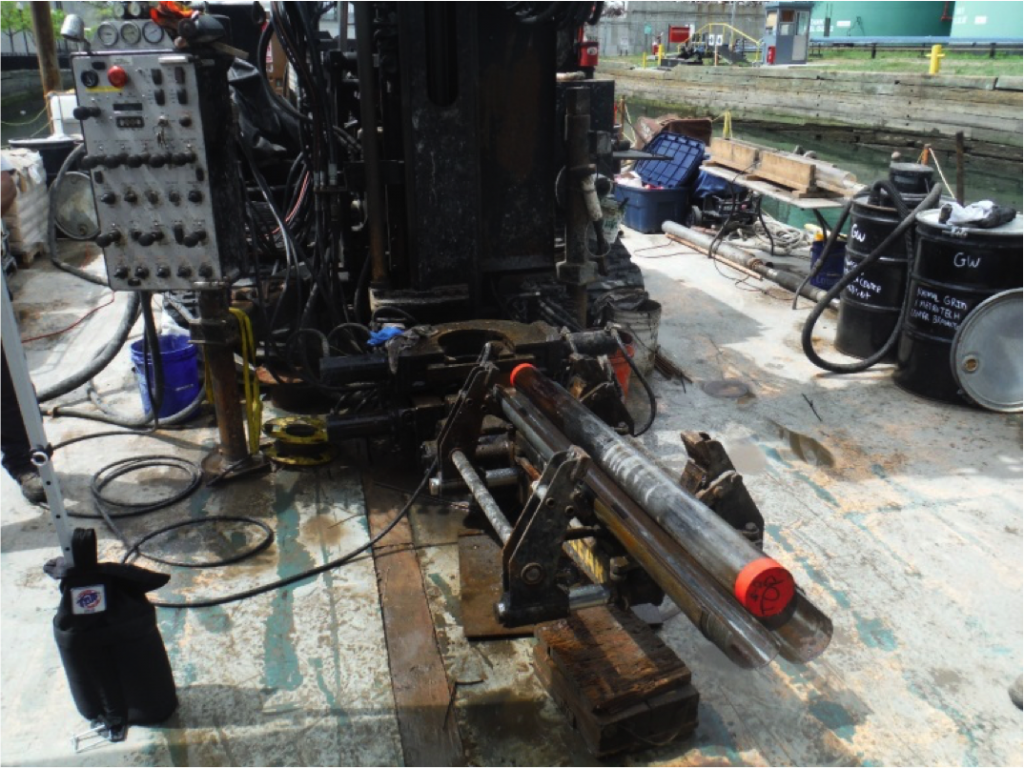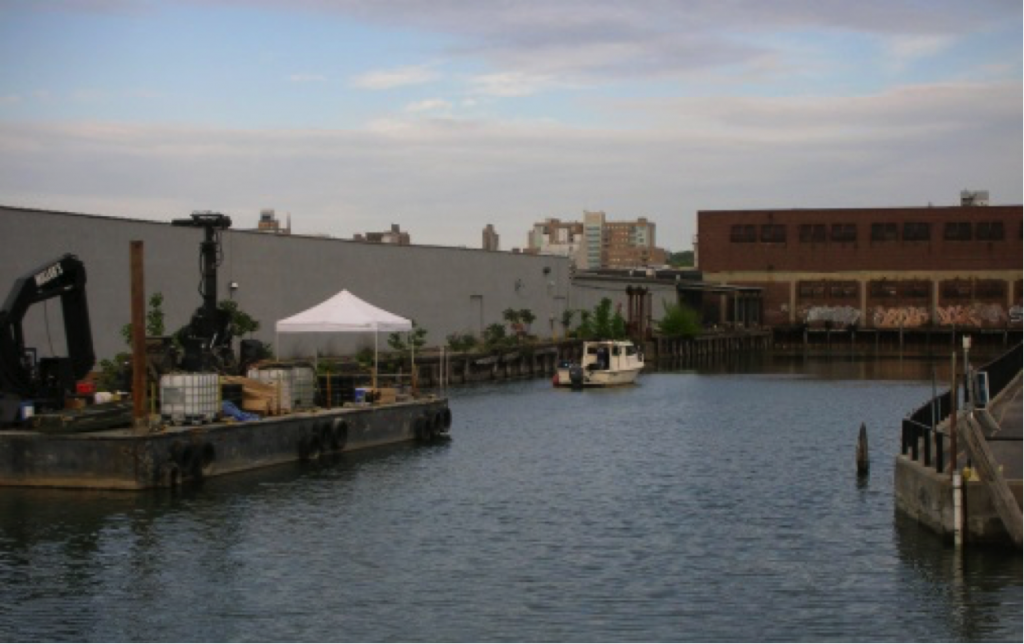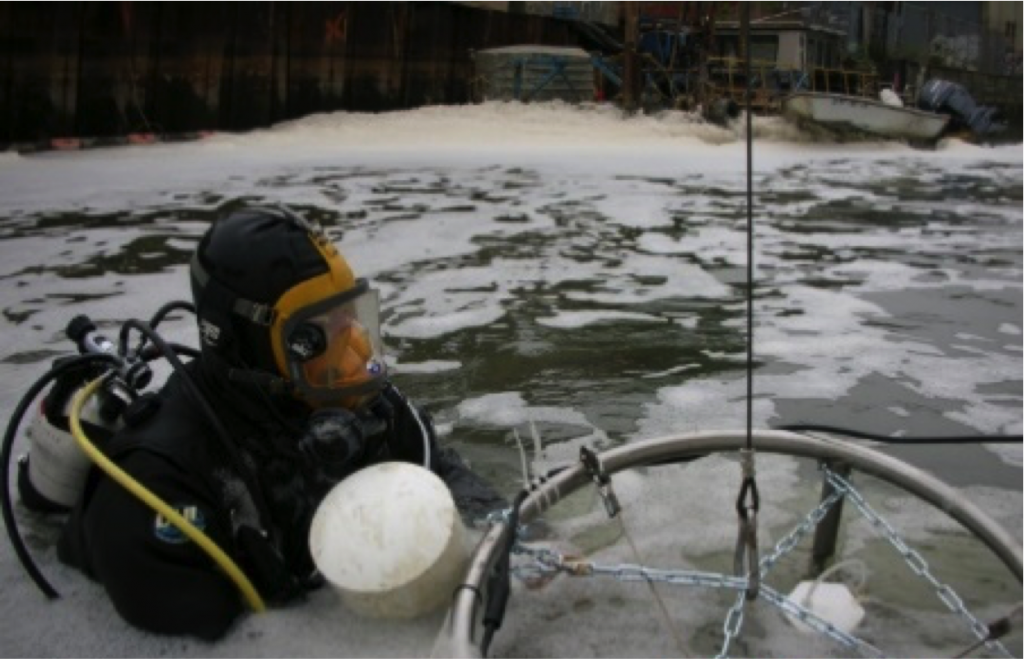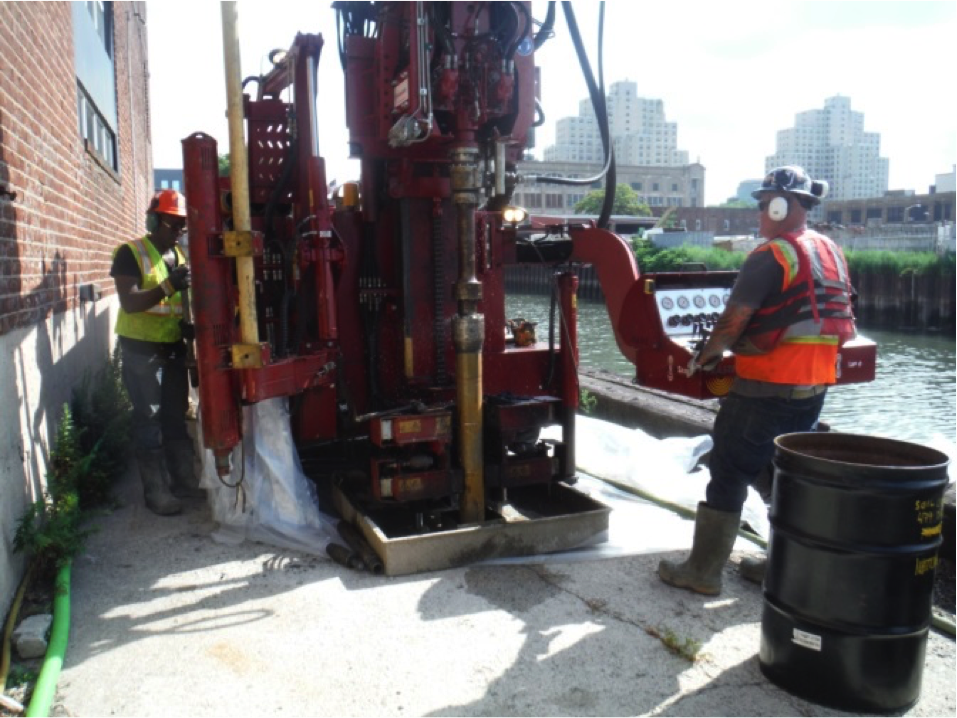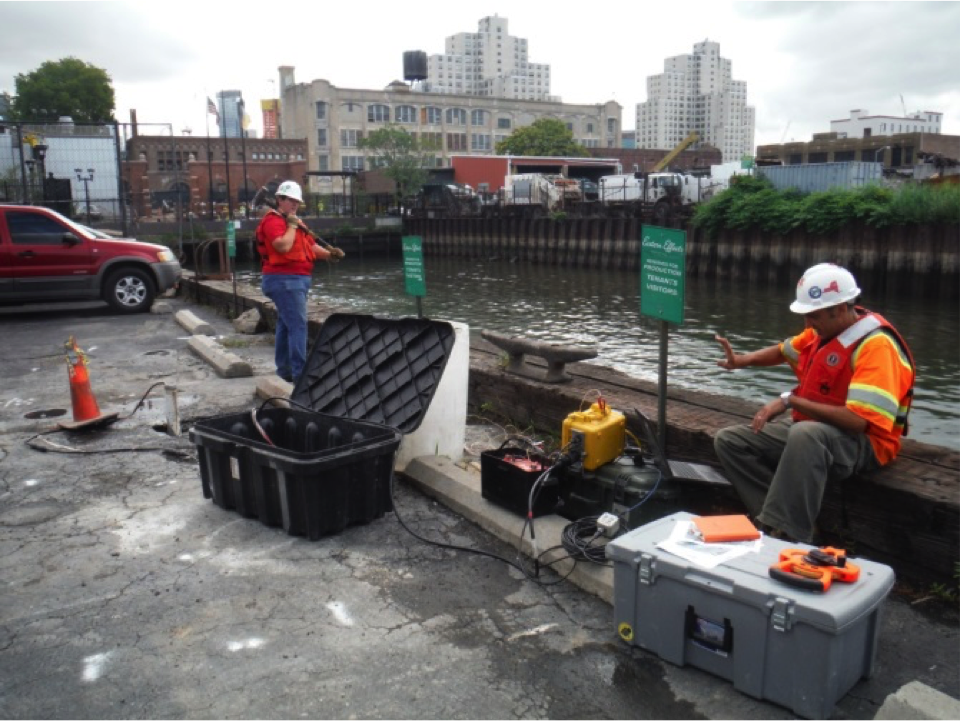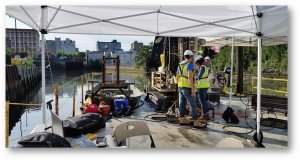February Update
During the last quarter of 2015, the Remedial Design team continued to collect field data and to submit reports to EPA presenting the findings from the various design investigations. The ongoing field work has included continuation of landside drilling as part of the bulkheads evaluation. It has also included measurements to understand the chemical and physical properties of the soft sediment and installation and retrieval of noise and vibration monitoring equipment deployed for a baseline study. During this same period various data reports have been submitted to EPA presenting findings of the ongoing pre-design investigations described in prior updates.
Field work is underway to conduct bulkhead investigations by landside drilling and will continue through March.
The Gowanus Canal Design Team arranged for aerial photographs to be taken over the Gowanus Canal. The photos, taken on a clear and sunny day, were purposefully captured at low tide to show sunken vessels, areas of exposed sediments, bulkhead characteristics, and other items of interest. The photos will be used by the Team to support site staging design, access coordination, scouting upland drilling locations, assess areas of low draft and additional debris reconnaissance.
Photos from Ongoing Work

The 4th and 6th Street Turning Basins with debris and barge traffic.

Gowanus Bay with downtown Manhattan in the background.
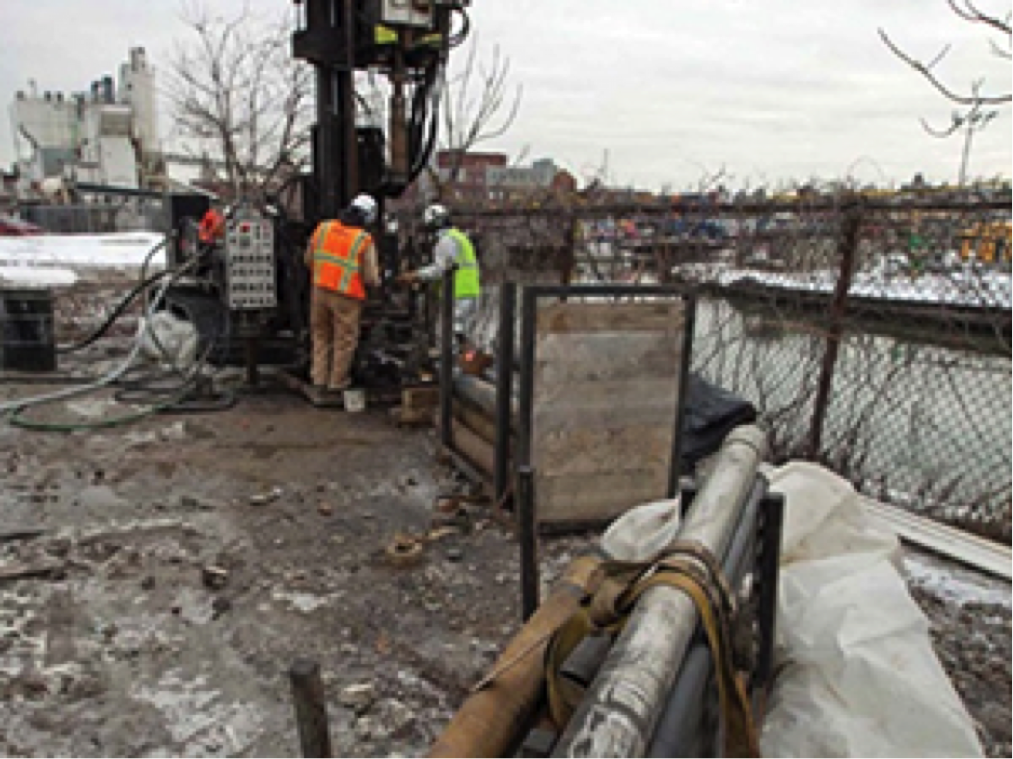
Landside drilling near the canal continues.
